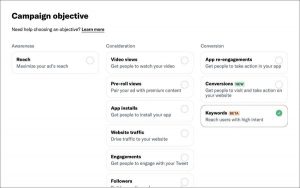How hard is it to build a URL shortener?
The simple answer is that it’s not too difficult. A software engineer can quickly spin up code to shorten a link, and there are lots of resources and tutorials online that walk you through how to do it.
However, there are a lot of factors that can increase cost and cause a business more headache than it’s worth. Below are eight reasons to not build your own URL shortener and why it may be a better investment to go with a proven solution.
1 – Cost and time
“Time is money” is an old saying related to opportunity cost. There are always costs associated with developing technology; monetary and non-monetary. In order to build a link shortener, resources have to be allocated for a developer to write the code and infrastructure has to be set up in order to run the service.
We’ve heard from customers who have tried to develop their own shortener that their opportunity and monetary costs skyrocketed. The time spent developing, purchasing new infrastructure and maintaining their service increased considerably over time.
A proven solution has economies of scale. They’ve already made investments in infrastructure and engineering that allow them to work more efficiently at a lower cost.
2 – Features
Developing your own link shortening solution may solve an initial use case, but as requirements evolve more features will likely become necessary. Things can quickly get out of hand as you begin to understand the many different features and tools top link shortening solutions need to offer.
For example, features like QR Codes and the ability to change your URL destination make your links more versatile and give your brand more control. Just as important, the team behind the product will constantly take customer feedback into consideration and release new features based on consumer needs.
3 – Analytics
Today’s marketers revolve around a world of metrics to understand engagement with their content and communications, and to make data-driven decisions. To that end, it’s not enough to simply count the number of clicks a link generates. The accuracy of the metrics is important, too.
This is key because bot crawlers programmatically click on links, which can lead to grossly inflated metrics. For a more accurate view of your link engagement, these bot clicks need to be filtered out. This, yet again, takes time and effort.
Top link management tools can help you track things like:
- Which website a click came from
- The time of engagement
- Geolocation information
You can also leverage their tools to help make sense of that engagement. For example, some platforms will allow you to group your links by channel or campaign and export data for deeper analysis. More advanced platforms will even enable you to grab historical data using their API and access a livestream of click data via webhooks.
4 – Reliability
You may expect your custom-built software to work constantly and reliably, but often there are unforeseen outages and bugs. Troubleshooting and fixing these issues cuts into company resources, such as engineering time.
A proven solution will have support and engineering teams to troubleshoot issues as they arise, no matter the time of day. When you’re knee-deep in launching a campaign, the last thing you’ll want to have to worry about is an outage.
5 – Scalability
Creating a small number of shortened links and gathering basic metrics may be achievable. However, most brands expect their business and its initiatives to grow. As new use cases for your solution arise, you may find you need to scale your link shortening abilities. What was once a need for a hundred links might become thousands or even millions of links.
An enterprise-grade solution will support link generation at scale and programmatically retrieve link analytics.
6 – Integrations
Platforms you use for your day-to-day may not integrate with your custom-built solution. Ideally, the link shortener you use will enable you to easily integrate with the platforms you already use, rather than working across multiple platforms to get things done.
7 – Security and compliance
As internal solutions are built, forgotten—yet extremely important—factors often include security and compliance. Data and privacy policies evolve constantly; is your newly developed shortener GDPR compliant? Are mechanisms in place to protect your links and the data?
A reliable solution will offer important security features like spam filtering and blocking of malicious links and, not to get too technical, ensure their systems don’t have any vulnerabilities by using third-party application penetration tests.
8 – Compatibility
The internet ecosystem is constantly evolving. Browsers change and standards update. Inevitably, this affects your links. Technical debt can be a concern, since it can be extremely difficult to keep up with every single nuance to how your links are impacted.
A solid link shortening solution will:
- Handle the edge cases and general internet “weirdness”
- Be compatible with all different types browsers
- Stay up to date with the latest internet standards
Digital & Social Articles on Business 2 Community
(11)







